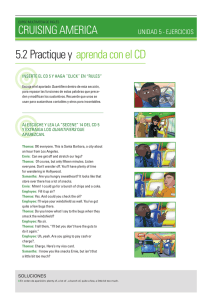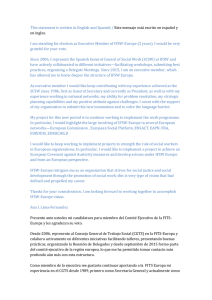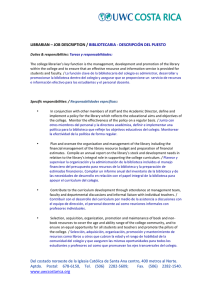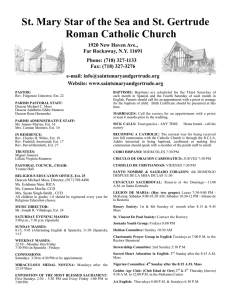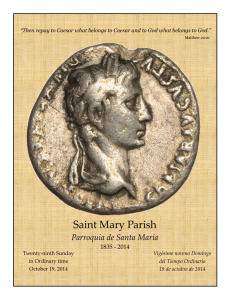pequeños cuadros del azar y la necesidad
Anuncio
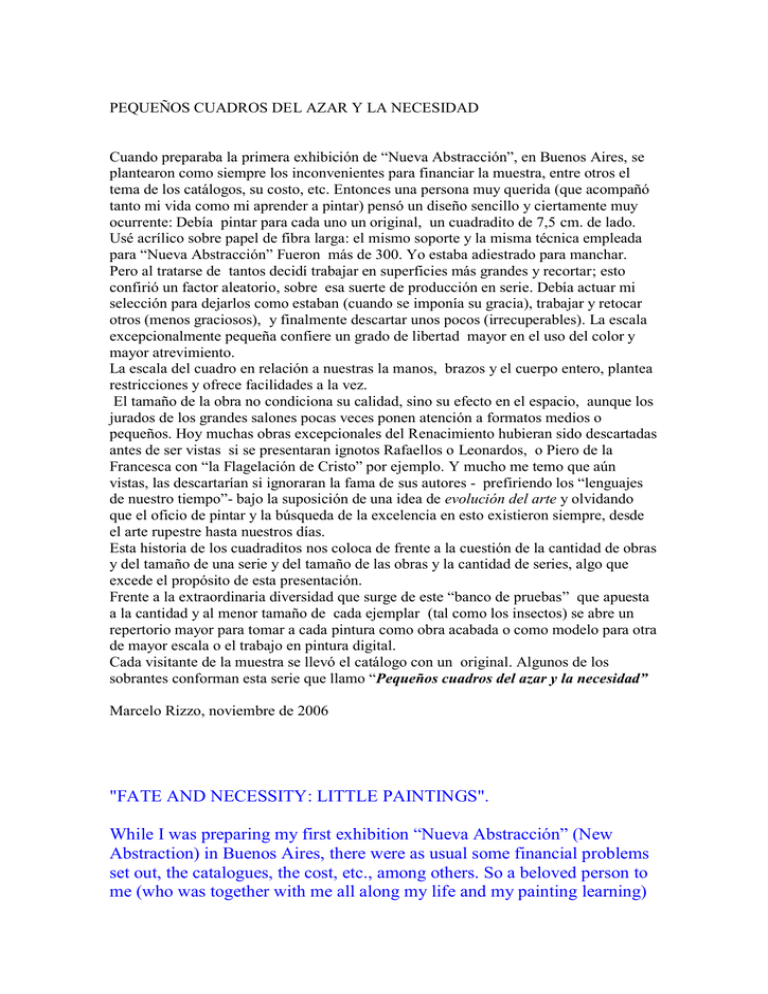
PEQUEÑOS CUADROS DEL AZAR Y LA NECESIDAD Cuando preparaba la primera exhibición de “Nueva Abstracción”, en Buenos Aires, se plantearon como siempre los inconvenientes para financiar la muestra, entre otros el tema de los catálogos, su costo, etc. Entonces una persona muy querida (que acompañó tanto mi vida como mi aprender a pintar) pensó un diseño sencillo y ciertamente muy ocurrente: Debía pintar para cada uno un original, un cuadradito de 7,5 cm. de lado. Usé acrílico sobre papel de fibra larga: el mismo soporte y la misma técnica empleada para “Nueva Abstracción” Fueron más de 300. Yo estaba adiestrado para manchar. Pero al tratarse de tantos decidí trabajar en superficies más grandes y recortar; esto confirió un factor aleatorio, sobre esa suerte de producción en serie. Debía actuar mi selección para dejarlos como estaban (cuando se imponía su gracia), trabajar y retocar otros (menos graciosos), y finalmente descartar unos pocos (irrecuperables). La escala excepcionalmente pequeña confiere un grado de libertad mayor en el uso del color y mayor atrevimiento. La escala del cuadro en relación a nuestras la manos, brazos y el cuerpo entero, plantea restricciones y ofrece facilidades a la vez. El tamaño de la obra no condiciona su calidad, sino su efecto en el espacio, aunque los jurados de los grandes salones pocas veces ponen atención a formatos medios o pequeños. Hoy muchas obras excepcionales del Renacimiento hubieran sido descartadas antes de ser vistas si se presentaran ignotos Rafaellos o Leonardos, o Piero de la Francesca con “la Flagelación de Cristo” por ejemplo. Y mucho me temo que aún vistas, las descartarían si ignoraran la fama de sus autores - prefiriendo los “lenguajes de nuestro tiempo”- bajo la suposición de una idea de evolución del arte y olvidando que el oficio de pintar y la búsqueda de la excelencia en esto existieron siempre, desde el arte rupestre hasta nuestros días. Esta historia de los cuadraditos nos coloca de frente a la cuestión de la cantidad de obras y del tamaño de una serie y del tamaño de las obras y la cantidad de series, algo que excede el propósito de esta presentación. Frente a la extraordinaria diversidad que surge de este “banco de pruebas” que apuesta a la cantidad y al menor tamaño de cada ejemplar (tal como los insectos) se abre un repertorio mayor para tomar a cada pintura como obra acabada o como modelo para otra de mayor escala o el trabajo en pintura digital. Cada visitante de la muestra se llevó el catálogo con un original. Algunos de los sobrantes conforman esta serie que llamo “Pequeños cuadros del azar y la necesidad” Marcelo Rizzo, noviembre de 2006 "FATE AND NECESSITY: LITTLE PAINTINGS". While I was preparing my first exhibition “Nueva Abstracción” (New Abstraction) in Buenos Aires, there were as usual some financial problems set out, the catalogues, the cost, etc., among others. So a beloved person to me (who was together with me all along my life and my painting learning) thought about an easy design and very creative indeed: I had to paint an original for each, a small 7.5cm long painting. I used acrylic over long fibber paper: the same support and technique used in “Nueva Abstracción”. They were more than 300. I was trained to stain. But considering they were so many I decided to work over larger surfaces and cut them out, that conferred a fortuitous factor, over that kind of mass production. I had to use my selection to let them the way they were(when their grace was imposed), working on and retouching others(less gracious), and finally, leaving some out (not able to be enhanced). The exceptionally little scale confers a bigger degree in the use of colour freedom and more nerve. The support size of our paintings in relation to our hands, arms and the entire body, sets out restrictions and offers chances at the same time. The size of the work does not make it conditional to its quality, but its effect into space, though the big show rooms judges not every time pay attention to medium or small sizes. Today many Renaissance exceptional works would have been rejected before being seen if unknown Rafaello, Leonardo or Piero de la Francesca with “La Flagelación de Cristo”(“The Flagellation of Christ”) , for example, were presented. And I am afraid that even seen, they would be rejected if their authors were forgotten and the images of those works, preferring “our times languages”, under the supposition of an idea of evolution of art and forgetting that the trade of art and the excellence scouting always existed, since cave painting time until present. This small paintings story faces us with the amount and size of a series and the size of the paintings and the amount of series, something that exceeds the objective of this exhibition. Facing the extraordinary diversity that comes from this “proves source” that pays more attention to the amount and the smaller size of each work (just like insects) it opens a larger repertoire to consider each picture as a finished work or as a model for another to a bigger scale or digital painting work. Each visitor to the exhibition took a catalogue home with an original and some of the left-overs conform this series I call “Pequeños cuadros del Azar y la Necesidad” (“Fate and Necessity : Litlle paintings”) Marcelo Rizzo, November 2006
